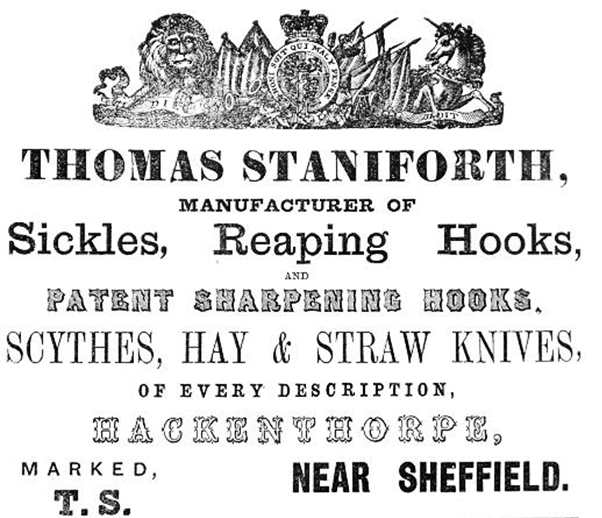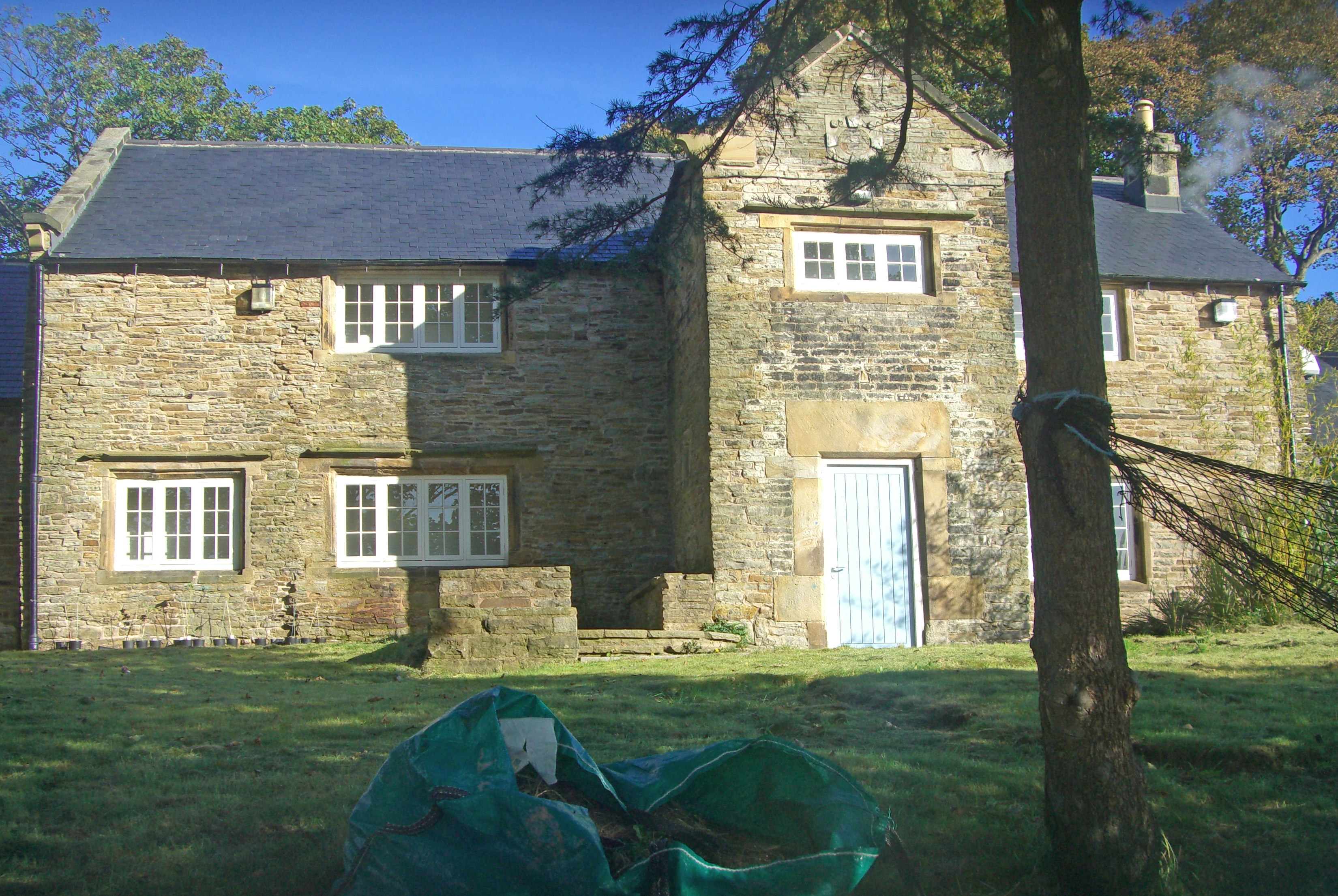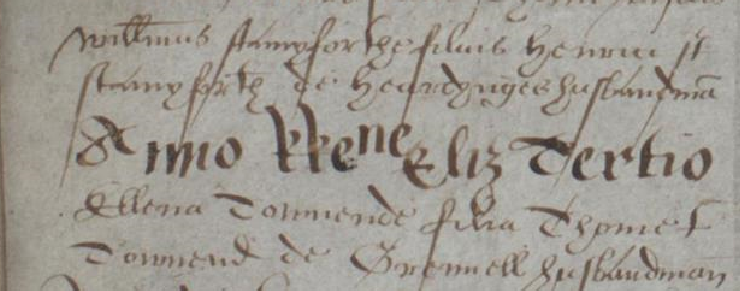
Thomas Staniforth & Co. Sickle works at Hackenthorpe.
 Herdings Farm, still standing in Norton, Sheffield.
Herdings Farm, still standing in Norton, Sheffield.
Henry resided at The Herdings in Norton parish, today the Herdings farmhouse still stands as one of Sheffield’s oldest buildings. He was a husbandsman (farmer), and although we know very little about the man, we do have some vague clues due to surviving records.
Henry Staniforth is mentioned on Muster rolls of 1539. Muster rolls are essentially militia rolls that featured all able bodied men and their weapons in each parish. Henry is listed on the muster roll among ‘Bilmen, horse and harnesse’. A bill was a type of pike that was used to dragging enemies from their horses. Due to his name being featured on the roll in 1539, it showed that Henry would have been at least sixteen, as only able bodied men between the ages of sixteen and sixty were recorded. This tells us Henry was born before 1523.
Obviously there are no parish records before 1559, and unfortunately the Norton Court Rolls are largely missing, and have been since the 1800s. There are a number of clues that suggest that Henry was related to the Staniforths that resided in the Brincliffe Edge area of Sheffield around that time.
In 1551, Richard Staniforth of ‘Brinklessedge’ left his will, he mentions a daughter Alice, wife Agnes and two sons, John and William. To William he leaves ‘smythe gear and two dossen scythes readye to the chapman’.
Six years later, this same William is later found on the Ecclesall Court Rolls where he swears fealty to the lord of the manor for a messuage and one bovate of land within Brinkcliffe Edge. It is evident that William lived to be a good age, and that he was likely born about 1527. His own will is dated 1619 and was proved the following year. Williams’s wife was a sister of Robert Holland, Vicar of Sheffield who was a radical puritan who showed an interest in Calvinism. Robert Holland owned land in Herdings, and were originally from Jordanthorpe, which was within Norton parish, no more than a mile from Henry’s residence at Herdings. It should also be noticed that Henry’s grandson William Staniforth met his future wife Elizabeth Hodgson at Jordanthorpe.
Robert Holland made William the trustee and guardian to his children, and this is proof that the relationship between the Staniforth family and the Holland family were close. There is no mention of Henry in Richard’s will, so it’s unlikely that he and William were brothers but it seems likely that he could have been a nephew to Richard, making him a cousin to William. In the 16th Century, it seems highly unlikely that the two small hamlets of Norton and Brincliffe Edge would have two sets of Staniforth’s that had no relation to each other.
 Baptism of William, son of Henry in 1560 (top line).
Baptism of William, son of Henry in 1560 (top line).
In 1562, a William Staniforth stands as a sponsor to a baptism at Norton of the daughter of Richard Willye. The other co-sponsors were Barbara and Marjorie Parker. The Parker family would have been neighbours of the Staniforth family in Norton. A Thomas Parker is also a witness to Richard Staniforth’s will, yet another family connection linking the Brincliffe Edge and Norton Staniforths.
William Staniforth of Brincliffe Edge had a son named Nicholas, who was appointed an executor to his will, it is highly likely that this is the same Nicholas that later appears on the Norton Parish records. On the register he is described as a ‘scythesmith of Woodsett-Dale’ and his son, also named William leased out a Scythe grinding wheel which was named Moss Carr in 1645. This wheel was one of the oldest on the River Sheaf and stood very close to Brincliffe Edge.
We can go back even further, to the 15th Century, in 1485 just after the Battle of Bosworth, a grant of land was made by John Hyde of Renishaw to Henry Foljambe of Walton. This land included ‘…a field called Whyfyld near Brentclyffe in Ecclsall and nine acres lying on Brenclyffe Egge near Salterlane and all his lands in Ecclsall inherited from his father’ Now what is interesting is the Witnesses include John Leek, John Cooke of Norton, John Parker of Norton Lees, John Stanyford and John Parker of Little Norton. John Leek and John Cooke were fathers-in-law of Henry Foljambe’s two sons. There is a strong possibility that this John Stanyforth is an ancestor to Richard Staniforth, especially with his link to the Parkers.
As far as we can tell, Henry only had one son, who appears on the Norton St. James Baptism register on the 28th October 1560. Henry is listed as the father, and as a husbandman of Herdings.
The next time we find mention of Henry is on his own burial record at the same church, St. James, his burial is dated 27th January 1575. The burial simply reads ‘Henry Stannyforthe of Heardynges’.
Henry’s son would go onto marry Elizabeth Thorpe, daughter of Christopher Thorpe and his wife Ann, and his grandson William would marry Elizabeth Hodgson, daughter of Richard Hodgson of Jordanthorpe, by this stage they had moved onto Eckington Parish and it was this William’s son William, great grandson of Henry that moved onto Hackenthorpe and had son Samuel, who then had son Thomas that setup the Thomas Staniforth & Co. Sickleworks.
Although little is known about the man himself, Henry certainly started a legacy, and this simple farmer started a line of Staniforths that became known around the world for quality tools.